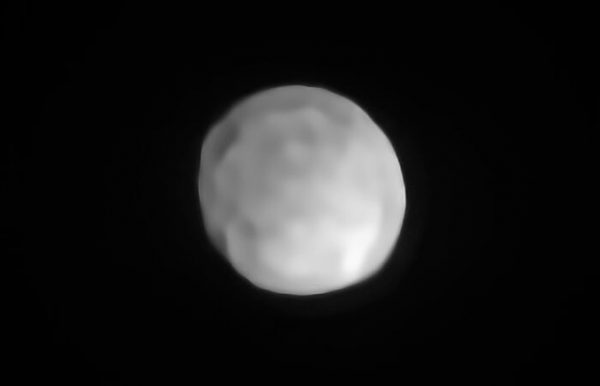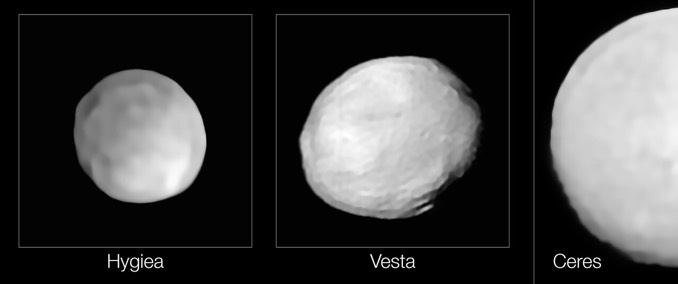VLT images suggest fourth-largest asteroid may be a dwarf planet – Astronomy Now Online

Using the SPHERE instrument with the European Southern Observatory’s Very Large Telescope, astronomers have captured images of Hygiea, the fourth-largest asteroid, revealing it is a nearly spherical body, one of the requirements for being classified as a dwarf planet. If so, it would be the smallest in the solar system, with a diameter just over 430 kilometres (267 miles).
Hygiea also meets three other requirements for dwarf planet status: it orbits the sun, it is not a moon and it has not swept debris from the vicinity of its orbit.
“Thanks to the unique capability of the SPHERE instrument on the VLT, which is one of the most powerful imaging systems in the world, we could resolve Hygiea’s shape, which turns out to be nearly spherical,” lead researcher Pierre Vernazza from the Laboratoire d’Astrophysique de Marseille in France said in a statement. “Thanks to these images, Hygiea may be reclassified as a dwarf planet, so far the smallest in the solar system.”
Hygiea is the fourth-largest body in the asteroid belt between Mars and Jupiter, ranking below Ceres, Vesta and Pallas. For comparison, Pluto, the most famous dwarf planet, has a diameter of about 2,400 kilometres (1,490 miles) while Ceres is just 950 kilometres (590 miles) across.

In a surprise, the new observations, discussed in a paper published by Nature Astronomy, show no signs of any very large impact craters. Astronomers had expected to find such a crater because Hygiea is the primary member of a large asteroid family with some 7,000 members, and all of them came from the same parent body. Whatever event broke up the parent body was expected to leave its mark on Hygiea.
“This result came as a real surprise as we were expecting the presence of a large impact basin, as is the case on Vesta,” said Vernazza. Only two distinct craters can be confirmed in the new imagery.
“Neither of these two craters could have been caused by the impact that originated the Hygiea family of asteroids whose volume is comparable to that of a 100 km-sized object. They are too small,” said co-author Miroslav Brož of the Astronomical Institute of Charles University in Prague.
The research team carried out numerical simulations that suggest Hygiea and its family of relatives likely were the result of a head-on collision with a body 75 to 150 kilometres (47 to 93 miles) in diameter about 2 billion years ago. The parent body was shattered by the impact, leaving Hygiea and its retinue of smaller fragments in its wake.




